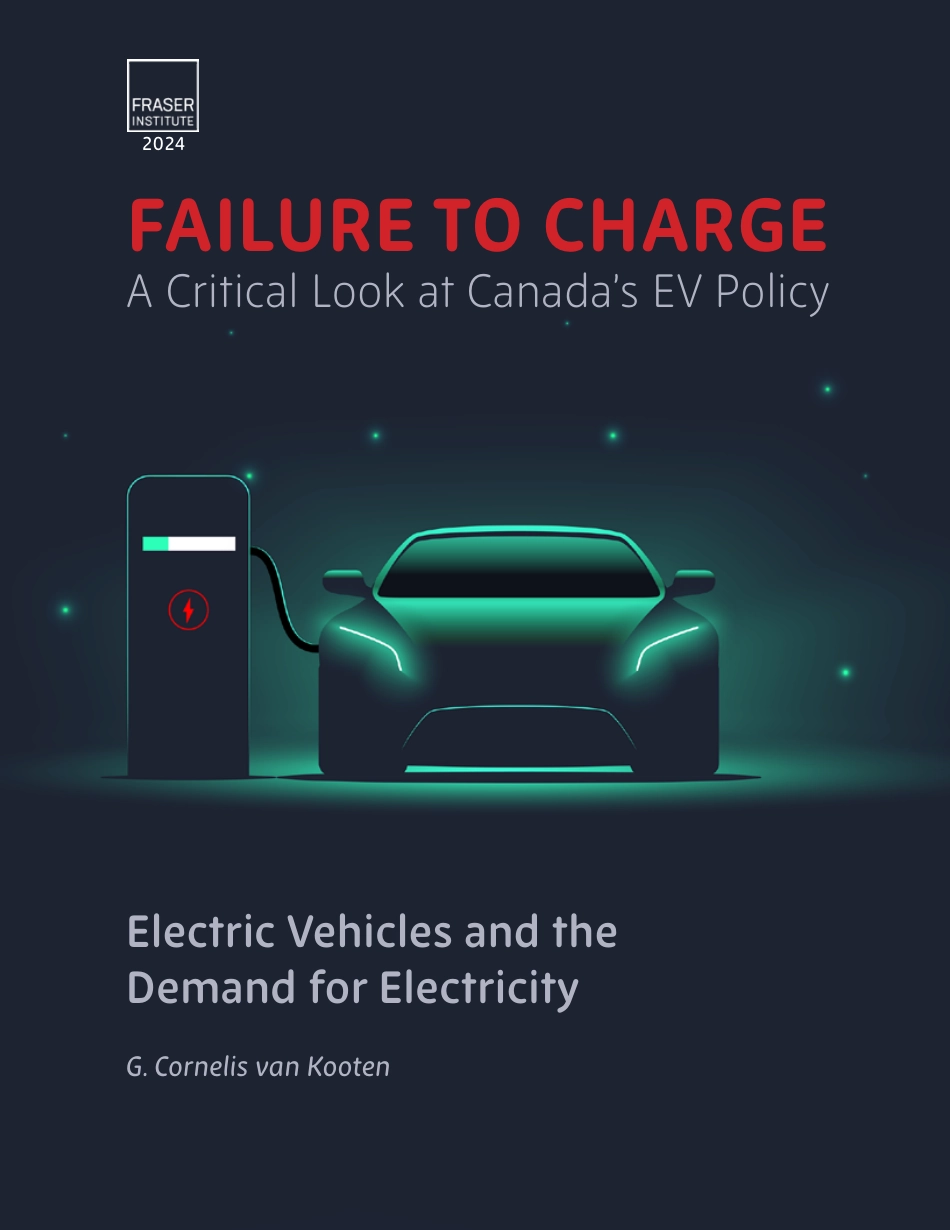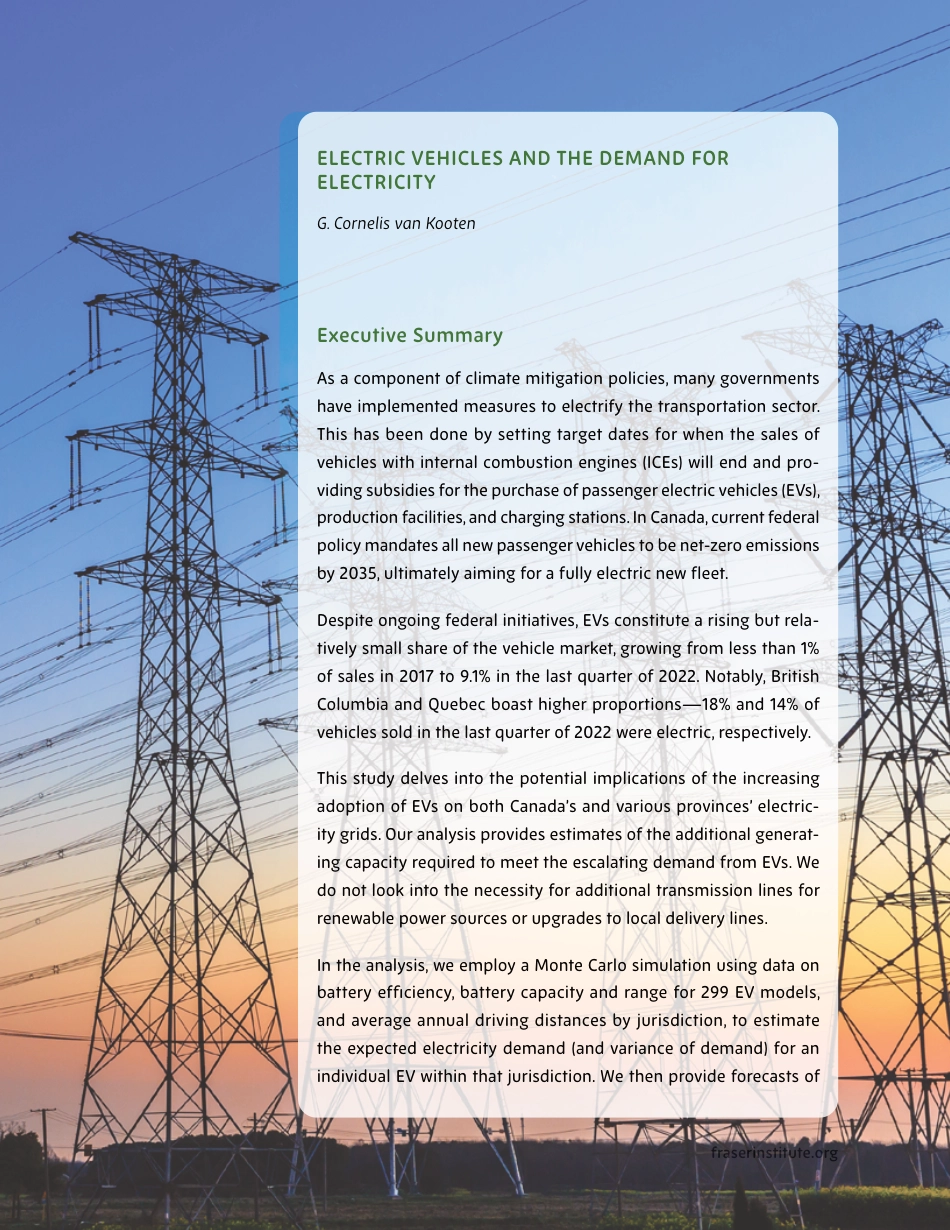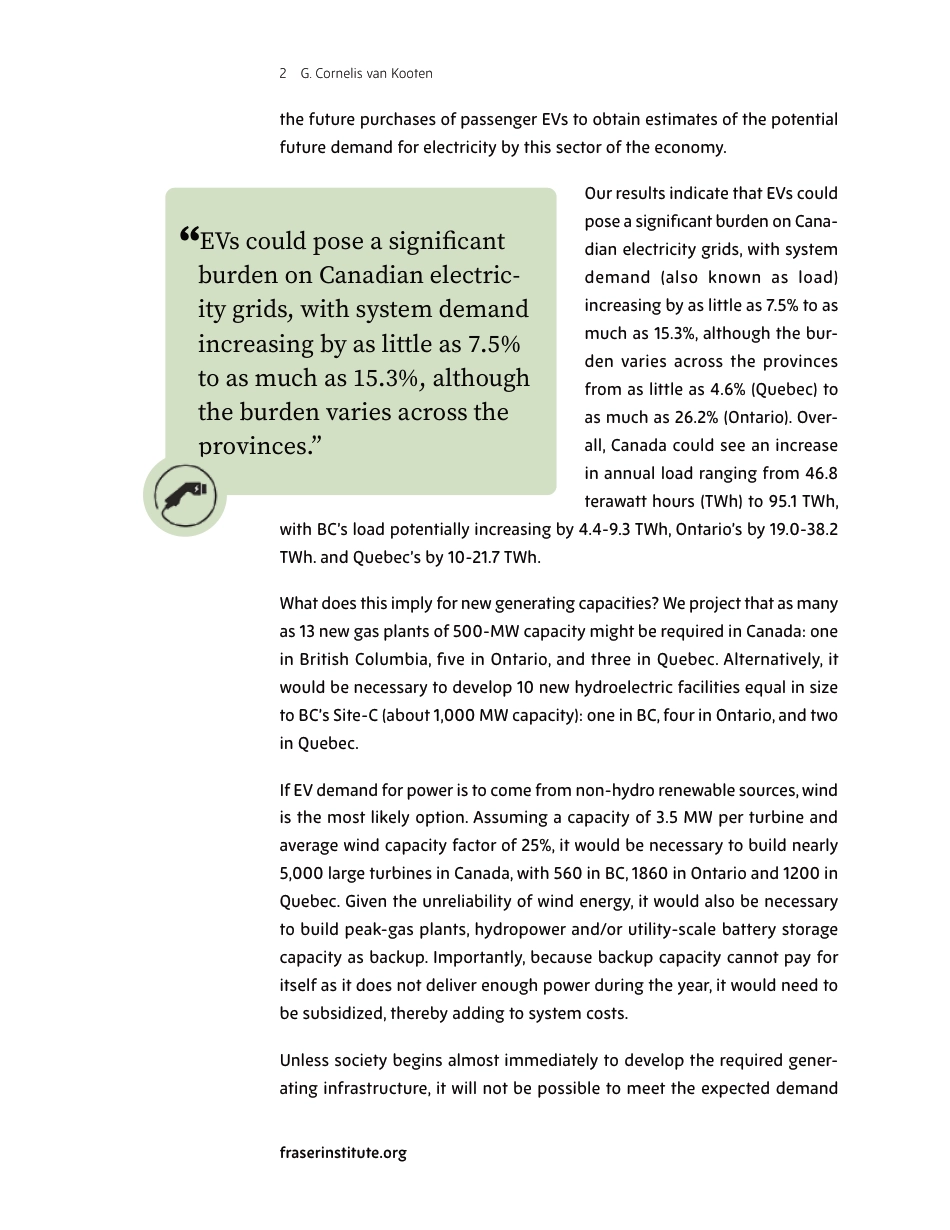FAILURETOCHARGEACriticalLookatCanada’sEVPolicyElectricVehiclesandtheDemandforElectricityG.CornelisvanKooten2024fraserinstitute.orgELECTRICVEHICLESANDTHEDEMANDFORELECTRICITYG.CornelisvanKootenExecutiveSummaryAsacomponentofclimatemitigationpolicies,manygovernmentshaveimplementedmeasurestoelectrifythetransportationsector.Thishasbeendonebysettingtargetdatesforwhenthesalesofvehicleswithinternalcombustionengines(ICEs)willendandpro-vidingsubsidiesforthepurchaseofpassengerelectricvehicles(EVs),productionfacilities,andchargingstations.InCanada,currentfederalpolicymandatesallnewpassengervehiclestobenet-zeroemissionsby2035,ultimatelyaimingforafullyelectricnewfleet.Despiteongoingfederalinitiatives,EVsconstitutearisingbutrela-tivelysmallshareofthevehiclemarket,growingfromlessthan1%ofsalesin2017to9.1%inthelastquarterof2022.Notably,BritishColumbiaandQuebecboasthigherproportions—18%and14%ofvehiclessoldinthelastquarterof2022wereelectric,respectively.ThisstudydelvesintothepotentialimplicationsoftheincreasingadoptionofEVsonbothCanada’sandvariousprovinces’electric-itygrids.Ouranalysisprovidesestimatesoftheadditionalgenerat-ingcapacityrequiredtomeettheescalatingdemandfromEVs.Wedonotlookintothenecessityforadditionaltransmissionlinesforrenewablepowersourcesorupgradestolocaldeliverylines.Intheanalysis,weemployaMonteCarlosimulationusingdataonbatteryefficiency,batterycapacityandrangefor299EVmodels,andaverageannualdrivingdistancesbyjurisdiction,toestimatetheexpectedelectricitydemand(andvarianceofdemand)foranindividualEVwithinthatjurisdiction.Wethenprovideforecastsof2G.CornelisvanKootenfraserinstitute.org“EVscouldposeasignificantburdenonCanadianelectric-itygrids,withsystemdemandincreasingbyaslittleas7.5%toasmuchas15.3%,althoughtheburdenvariesacrosstheprovinces.”thefuturepurchasesofpassengerEVstoobtainestimatesofthepotentialfuturedemandforelectricitybythissectoroftheeconomy.OurresultsindicatethatEVscouldposeasignificantburdenonCana-dianelectricitygrids,withsystemdemand(alsoknownasload)increasingbyaslittleas7.5%toasmuchas15.3%,althoughthebur-denvariesacrosstheprovincesfromaslittleas4.6%(Quebec)toasmuchas26.2%(Ontario).Over-all,Canadacouldseeanincreaseinannualloadrangingfrom46.8terawatthours(TWh)to95.1TWh,withBC’sloadpotentiallyincreasingby4.4-9.3TWh,Ontario’sby19.0-38.2TWh.andQuebec’sby10-21.7TWh.Whatdoesthisimplyfornewgeneratingcapacities?Weprojectthatasmanyas13newgasplantsof500-MWcapacitymightberequiredinCanada:oneinBritishColumbia,fiveinOntario,andthreeinQuebec.Alternatively,itwouldbenecessarytodevelop10newhydroelectricfacilitiesequalinsizetoBC’sSite-C(about1,000MWcapacity):oneinBC,fourinOntario,andtwoinQuebec.IfEVdemandforpoweristocomefromnon-hydrorenewablesources,windisthemostlikelyoption.Assumingacapacityof3.5MWperturbineandaveragewindcapacityfactorof25%,itwouldbenecessarytobuildnearly5,000largeturbinesinCanada,with560inBC,1860inOntarioand1200inQuebec.Giventheunreliabilityofwindenergy,itwouldalsobenecessarytobuildpeak-gasplants,hydropowerand/orutility-scalebatterystoragecapacityasbackup.Importantly,becausebackupcapacitycannotpayforitselfasitdoesnotdeliverenoughpowerduringtheyear,itwouldneedtobesubsidized,therebyaddingtosystemcosts.Unlesssocietybeginsalmostimmediatelytodeveloptherequiredgener-atinginfrastructure,itwillnotbepossibletomeettheexpecteddemandElectricVehiclesandtheDemandfor...



 VIP
VIP VIP
VIP VIP
VIP VIP
VIP VIP
VIP VIP
VIP VIP
VIP VIP
VIP VIP
VIP VIP
VIP